34 巻, 3 号
選択された号の論文の93件中51~93を表示しています
筋腱疾患
-
2010 年 34 巻 3 号 p. 783-785
発行日: 2010年
公開日: 2010/11/16
PDF形式でダウンロード (363K) -
2010 年 34 巻 3 号 p. 787-791
発行日: 2010年
公開日: 2010/11/16
PDF形式でダウンロード (607K) -
2010 年 34 巻 3 号 p. 793-795
発行日: 2010年
公開日: 2010/11/16
PDF形式でダウンロード (373K) -
2010 年 34 巻 3 号 p. 797-801
発行日: 2010年
公開日: 2010/11/16
PDF形式でダウンロード (913K) -
2010 年 34 巻 3 号 p. 803-806
発行日: 2010年
公開日: 2010/11/16
PDF形式でダウンロード (387K) -
2010 年 34 巻 3 号 p. 807-809
発行日: 2010年
公開日: 2010/11/16
PDF形式でダウンロード (343K) -
2010 年 34 巻 3 号 p. 811-814
発行日: 2010年
公開日: 2010/11/16
PDF形式でダウンロード (319K) -
2010 年 34 巻 3 号 p. 815-819
発行日: 2010年
公開日: 2010/11/16
PDF形式でダウンロード (577K) -
2010 年 34 巻 3 号 p. 821-823
発行日: 2010年
公開日: 2010/11/16
PDF形式でダウンロード (312K) -
2010 年 34 巻 3 号 p. 825-828
発行日: 2010年
公開日: 2010/11/16
PDF形式でダウンロード (369K) -
2010 年 34 巻 3 号 p. 829-832
発行日: 2010年
公開日: 2010/11/16
PDF形式でダウンロード (334K) -
2010 年 34 巻 3 号 p. 833-836
発行日: 2010年
公開日: 2010/11/16
PDF形式でダウンロード (329K) -
2010 年 34 巻 3 号 p. 837-840
発行日: 2010年
公開日: 2010/11/16
PDF形式でダウンロード (369K) -
2010 年 34 巻 3 号 p. 841-845
発行日: 2010年
公開日: 2010/11/16
PDF形式でダウンロード (599K) -
2010 年 34 巻 3 号 p. 847-851
発行日: 2010年
公開日: 2010/11/16
PDF形式でダウンロード (492K) -
2010 年 34 巻 3 号 p. 853-856
発行日: 2010年
公開日: 2010/11/16
PDF形式でダウンロード (429K) -
2010 年 34 巻 3 号 p. 857-860
発行日: 2010年
公開日: 2010/11/16
PDF形式でダウンロード (414K)
神経疾患
-
2010 年 34 巻 3 号 p. 861-865
発行日: 2010年
公開日: 2010/11/16
PDF形式でダウンロード (639K) -
2010 年 34 巻 3 号 p. 867-871
発行日: 2010年
公開日: 2010/11/16
PDF形式でダウンロード (512K)
その他
-
2010 年 34 巻 3 号 p. 873-877
発行日: 2010年
公開日: 2010/11/16
PDF形式でダウンロード (628K) -
2010 年 34 巻 3 号 p. 879-883
発行日: 2010年
公開日: 2010/11/16
PDF形式でダウンロード (427K) -
2010 年 34 巻 3 号 p. 885-889
発行日: 2010年
公開日: 2010/11/16
PDF形式でダウンロード (530K) -
2010 年 34 巻 3 号 p. 891-894
発行日: 2010年
公開日: 2010/11/16
PDF形式でダウンロード (538K) -
2010 年 34 巻 3 号 p. 895-898
発行日: 2010年
公開日: 2010/11/16
PDF形式でダウンロード (795K) -
2010 年 34 巻 3 号 p. 899-902
発行日: 2010年
公開日: 2010/11/16
PDF形式でダウンロード (313K) -
2010 年 34 巻 3 号 p. 903-906
発行日: 2010年
公開日: 2010/11/16
PDF形式でダウンロード (439K) -
2010 年 34 巻 3 号 p. 907-910
発行日: 2010年
公開日: 2010/11/16
PDF形式でダウンロード (350K)
治療法
-
2010 年 34 巻 3 号 p. 911-914
発行日: 2010年
公開日: 2010/11/16
PDF形式でダウンロード (426K) -
2010 年 34 巻 3 号 p. 915-918
発行日: 2010年
公開日: 2010/11/16
PDF形式でダウンロード (365K) -
2010 年 34 巻 3 号 p. 919-922
発行日: 2010年
公開日: 2010/11/16
PDF形式でダウンロード (298K)
症例報告
-
2010 年 34 巻 3 号 p. 923-925
発行日: 2010年
公開日: 2010/11/16
PDF形式でダウンロード (279K) -
2010 年 34 巻 3 号 p. 927-930
発行日: 2010年
公開日: 2010/11/16
PDF形式でダウンロード (373K) -
2010 年 34 巻 3 号 p. 931-934
発行日: 2010年
公開日: 2010/11/16
PDF形式でダウンロード (475K) -
2010 年 34 巻 3 号 p. 935-938
発行日: 2010年
公開日: 2010/11/16
PDF形式でダウンロード (410K) -
2010 年 34 巻 3 号 p. 939-942
発行日: 2010年
公開日: 2010/11/16
PDF形式でダウンロード (319K) -
2010 年 34 巻 3 号 p. 943-946
発行日: 2010年
公開日: 2010/11/16
PDF形式でダウンロード (390K) -
2010 年 34 巻 3 号 p. 947-949
発行日: 2010年
公開日: 2010/11/16
PDF形式でダウンロード (238K) -
2010 年 34 巻 3 号 p. 951-953
発行日: 2010年
公開日: 2010/11/16
PDF形式でダウンロード (308K) -
2010 年 34 巻 3 号 p. 955-958
発行日: 2010年
公開日: 2010/11/16
PDF形式でダウンロード (340K) -
2010 年 34 巻 3 号 p. 959-962
発行日: 2010年
公開日: 2010/11/16
PDF形式でダウンロード (433K) -
2010 年 34 巻 3 号 p. 963-967
発行日: 2010年
公開日: 2010/11/16
PDF形式でダウンロード (473K) -
2010 年 34 巻 3 号 p. 969-972
発行日: 2010年
公開日: 2010/11/16
PDF形式でダウンロード (437K) -
2010 年 34 巻 3 号 p. 973-976
発行日: 2010年
公開日: 2010/11/16
PDF形式でダウンロード (384K)
